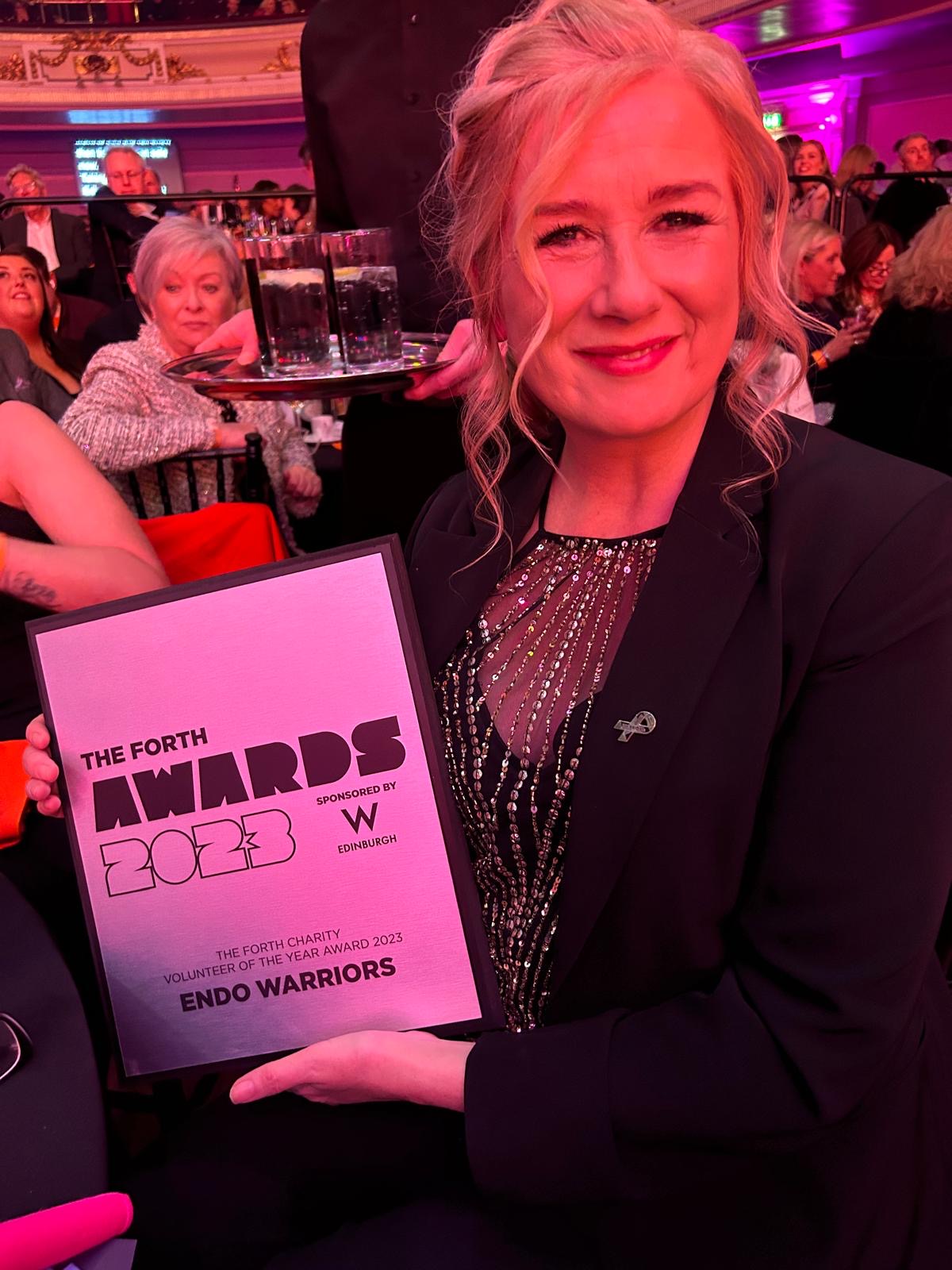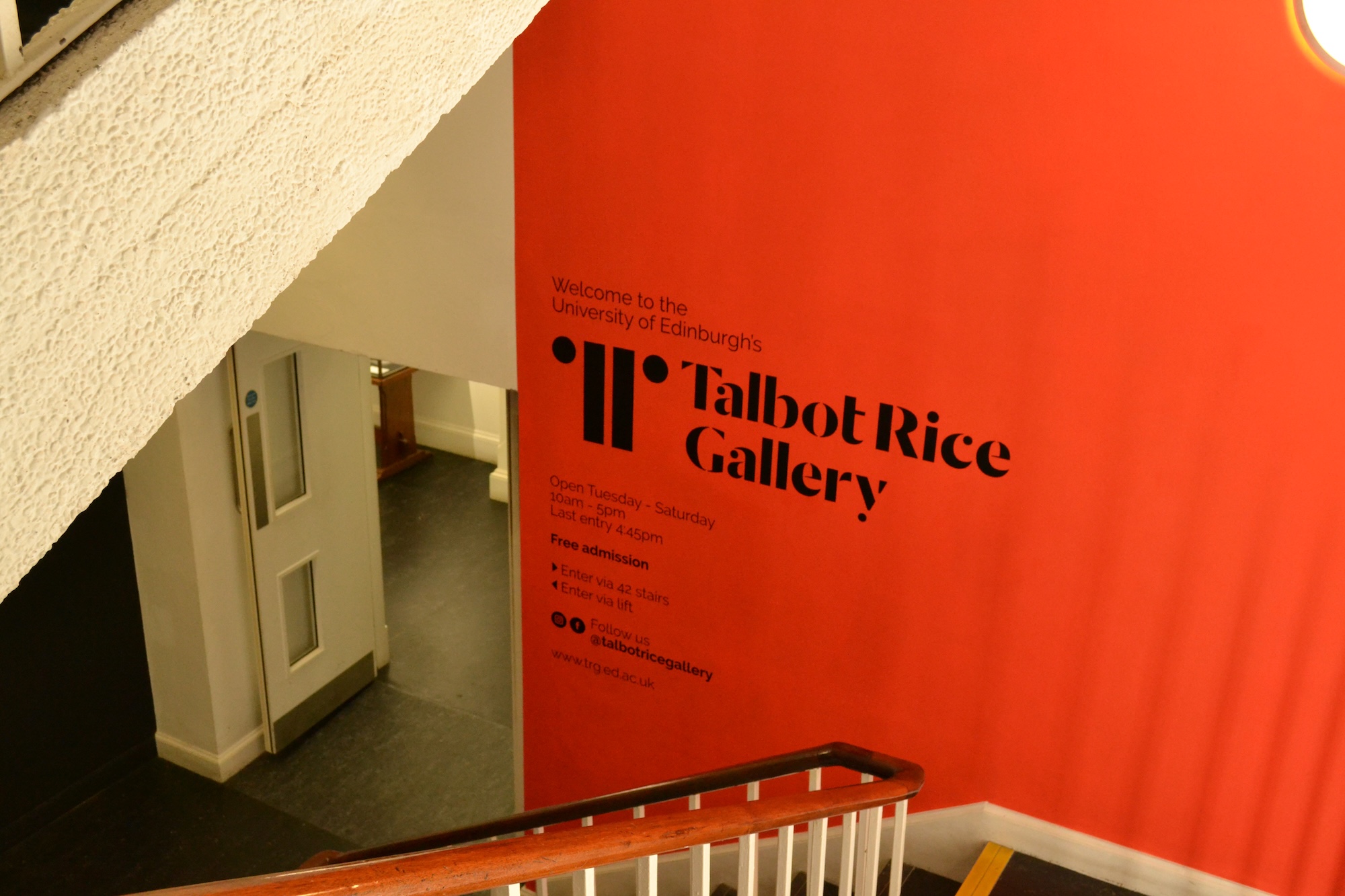Women in the U.K. face lack of urgency, long waits when it comes to diagnosis and treatment for extreme pelvic pain
EDINBURGH, U.K.— On a gray morning in St. Andrews, a coastal town about 30 miles northeast of Edinburgh, Chloe Carmichael curled up on her sofa with a heat pad pressed to her abdomen and a mess of paperwork from National Health Service Scotland tossed on the table. At 23, Carmichael thought she’d be working full-time and starting her career. Instead, she’s on disability.
“I was so goal-oriented,” she said. “Now, I don’t know what to do with my life.”
Carmichael was just 12 years old when the pain began. By 13, the word endometriosis was casually raised — then, she said, it was buried.
Doctors told her it was just bad periods. She was put on the pill at 12. Depo-Provera injections, another form of birth control, followed. The pain worsened. Vomiting spells landed her in the hospital. At 18, she was told to get yet another form of birth control, an IUD, embedded into her uterine wall, causing pain so severe she had to travel nearly two hours to get it removed.
It took a decade for a gynecologist to ask the right question: “Have you ever been tested for endo?”
The answer was no. The diagnosis was overdue. The endometrial tissue was already growing on organs outside of her womb.

Image Provided
* * *
Endometriosis is a chronic and incurable inflammatory disease where cells that resemble those lining the uterus grow outside of it and onto other organs, often causing scarring, excruciating pain, fatigue, digestive issues and infertility. In most cases it can only be definitively diagnosed via laparoscopy, an invasive surgery performed by a specialist. The World Health Organization estimates endometriosis affects 1 in 10 women globally. Often and in many countries, the diagnosis is long overdue while women and their doctors try to narrow down the cause of pelvic pain. In the U.K., where England, Wales, Northern Ireland and Scotland are each run by its own National Health Service, or NHS, government-funded care available to all residents can mean a significant wait time for some diagnoses and surgeries, including, and notably, endometriosis.
According to a 2024 report from Endometriosis UK, the leading charity providing information and advocacy about the disease to these countries, women in Scotland now face wait times of up to eight years to receive a diagnosis and care plan. And there’s a backlog tied to the pandemic, when people put off non-emergency care, including visits to their gynecologists. Since Covid-19 restrictions subsided, the number of women waiting more than 12 weeks for gynecological care in Scotland swelled from 3,000 to more than 43,000, which is worse than for any type of healthcare in the country.
“You hear these numbers, but they’re not just statistics, they’re beautiful women crying in pain on the bathroom floor. Women having to give up on their dreams,” said Candice McKenzie, founder of the independent support group Endo Warriors West Lothian, a first of its kind when it comes to grassroots advocacy in Scotland.
McKenzie’s group began as an informal support circle with a tea kettle in a borrowed hospital room. Now it’s grown into the Endo Warriors Facebook community of more than a thousand Scottish women.
“Like many, I’d been through it all. Years of being gaslit, misdiagnosed and dismissed,” she said in an interview.

Image provided
Her turning point came after a particularly condescending pain management appointment in Edinburgh several years ago. The appointment was in response to ongoing pain and physical visible changes in her body. She was coughing up blood, could not move her bowels, and was experiencing recurring UTIs.
“I remember going in with a shred of hope that someone would finally see me, but the appointment felt more like a tick-box exercise than real care,” she said. She said she was prescribed Gabapentin at the appointment, a drug mainly used for treating seizures and anxiety. Feeling broken afterward and bursting into tears as soon as she got in her car, she decided it was time to make a change. “I left burning with determination.”
After asking the NHS for permission to start an affiliated, though independently funded, advocacy group and receiving approval, she began offering one-on-one chats in public gardens and parks, which evolved into the inclusive digital community that is Endo Warriors. It is not required to have this approval, but McKenzie said she felt she needed support in the sense of recognition, trust and cooperation. “It felt important to build that bridge and have the NHS and professionals aware of us and to be supported at a clinical level,” she said.
She now runs the West Lothian branch with a team of people, holding monthly meetings at St. John’s Hospital in West Lothian and Spire Murrayfield Hospital in Edinburgh.
She’s found strength in the numbers of women now involved in the various versions of Endo Warriors in the U.K. “It was a reminder that connection can really be revolutionary,” she said.
For McKenzie, an office manager living in Edinburgh, her official diagnosis took 11 years. She’s been living with pain for decades and her surgeries are now in the double digits, including a pelvic clearance, where doctors scrape and cut out the endometrial tissue. It does grow back, however, and McKenzie is among women prescribed letrozole, which reduces estrogen and can help women manage some symptoms. McKenzie’s symptoms started at 9; that was 40 years ago.
* * *
McKenzie is listed as an official ambassador for Endo1000, a U.K.-wide research project housed at the University of Edinburgh that could provide some of the most useful data to date when it comes to living with this disease.
Reproductive Health Professor at the University of Edinburgh Phillipa Saunders is a co-founder of Endo1000. According to Saunders, the project is a spin-off from EXPPECT, a collaborative group founded at the university that brings together researchers, clinicians and patients to study endometriosis.
It’s been around for 12 years and includes Ph.D. students, lab technicians, surgeons and clinical trial specialists. “Our setup is quite unique,” she said. “In most places, lab research and clinical trials happen separately.”
But Saunders and the rest of the team were getting increasingly frustrated by the slow pace of progress, given how serious and prevalent this disease is among women. So they launched Endo 1000. The goal is to study 1,000 people over two years and combine that data with AI and previous research to develop new treatments. Volunteers for the study will use an app on phones or watches, submit samples that include urine and stool, and keep documentation.
There are plenty of people who want to do research on women’s health and make a difference, but we don’t have enough jobs or funding to support them. Phillipa Saunders, Reproductive Health Professor at the University of Edinburgh
While the project is part of a larger European consortium, funding in Scotland is happening through advocacy and private donations, with a plan to raise £1 million. The donations come in small amounts – including one GoFundMe page started by a woman diagnosed with endometriosis who gave up coffee and then donated the savings to Endo1000, encouraging others to also contribute. Saunders said some of the best fundraisers have been patients themselves.
But the project’s co-founder Andrew Horne of the University of Edinburgh’s Centre for Reproductive Health, knew he needed much larger donations to get it off the ground. He sought out British entrepreneur Marie Macklin because he knew she suffered from endometriosis. Instead of donating, she decided to lead the funding campaign, according to an article in the Guardian. Those efforts secured enough funding for the first 250 volunteers, with a goal to sign up 500 by the end of 2025, according to an announcement from Endo1000.
If successful, the project will provide medical professionals with information and solutions to diagnose and treat women in Scotland and elsewhere sooner.
Though the many efforts made by researchers like Saunders have moved things along, she says she’s extremely frustrated by the slow pace of things due to financial obstruction.
“There are plenty of people who want to do research on women’s health and make a difference, but we don’t have enough jobs or funding to support them. I personally have a stack of research projects I’d start tomorrow if someone gave me a million pounds. But that money just isn’t there,” she said.
In the U.K., there’s no dedicated funding for endometriosis, so patients and researchers have to compete with all other reproductive health issues for the same limited pool of money, Saunders said. “Compare that to Australia, where they created a special fund for endometriosis, and it has made a huge impact.”
But Saunders believes efforts made by her team in the U.K. is moving things in the right direction by putting patients’ priorities at the center of their research, “not just what clinicians think matters.”
* * *
For most women, the path to a diagnosis and treatment under their NHS starts with a general practitioner and referral or a visit to the gynecologist. But gynecological care as a whole in the U.K. and Scotland comes with additional challenges.
Lothian, which includes the capital of Edinburgh, is one of 14 regions within Scotland NHS. According to NHS stats, 72% of women there referred to gynecological services wait longer than 12 weeks to be seen. For many, this means living with undiagnosed bleeding, scar tissue formation and, in some cases, organ fusion. Those 12 weeks are more than enough time for irreversible damage to occur, according to research from the Royal College of Obstetricians and Gynecologists in London.
The Scottish government’s Women’s Health Plan, launched in 2021, has made policy efforts and promised reform, but progress is stalled by lack of accountability from the NHS, say advocates.
While waiting for policy changes, researchers and advocates continue to gather data about the effects of endometriosis, including on lost wages and productivity linked to women who are unable to work because of their pain. A study by the U.K.-wide Office of National Statistics released in February 2025 looked at employee pay and employee status of women diagnosed with the disease in England, focusing on changes to income levels post-diagnosis compared to two years prior. It found a “statistically significant average decrease” in income for diagnosed women aged 25 to 54. Another report from the NHS Confederation found that for every additional £1 of public investment in obstetrics and gynecology services per woman in England, there is an estimated return on investment of £11, or an additional £319 million in total gross value added. Another report, “Women’s Health Economics: Investing In the 51 Percent,” also found that the economic cost of absenteeism at work due to severe period pain and heavy periods, alongside endometriosis, fibroids and ovarian cysts, is estimated at £11 billion per year.
Chloe Carmichael in St. Andrew’s is one woman whose pain prevents her from regular work. She remains on government disability while waiting for excision surgery. Before disability, she worked in elder care and said she loved it.
“My dream job was always to be a mum, but I don’t know if I will ever have that chance now,” she said.
Her first procedure didn’t offer relief, and she says it wasn’t performed by an endometriosis specialist. The surgeon burnt her lesions, and they then worsened from inflammation. Now, her only real option may be to pay out-of-pocket for care, an impossible cost for someone living with limited income in the rural county of Fife.
“Everything’s online. There’s no in-person care near me,” she said. “England has more help, but I can’t just get there every week.”
In the meantime, she swaps voice messages with other sufferers on Snapchat. They share pain updates, laugh through the tears and hold each other up.
Finding them has been helpful to Carmichael and makes her feel less alone, but her pain is real, and a mental boost doesn’t change it. “I just want my life back,” she said.
* * *

Image provided
Poppy Harris also turned to social media – mainly TikTok – to feel less alone. In one video, she sits in the comfort of her bedroom and after talking about her pain, frustration and struggle with having endometriosis in the healthcare system she lives in, she says to the camera, “I feel like this is definitely a good outlet for me to have, just to talk about things because it is lovely to have supportive family and friends to discuss things with, but sometimes you just don’t want anyone to really say anything back, you just want to actually say it out loud and get it out of your system.” The video gained almost 400 likes and 72 comments.
Harris, who’s a 20-year-old communications student at Napier University in Edinburgh, has lived with the condition for nearly half her life.
She got her period at 14 and immediately sensed something was wrong. “I was exhausted and moody to the point of madness,” she said. As with Carmichael, birth control was the first suggested solution. It’s the go-to because it can regulate hormone levels and intervals between periods, and it can help some women have less pain in their cycles. For Harris, one form of birth control led to other forms. Then painkillers. Then gaslighting.
“I told doctors this wasn’t normal,” she said. “But they only take you seriously if you’re screaming on the floor in pain.”
It took eight years before she found a physician who believed her. “They put me on birth control during my developmental years. Instead of treating the root problem, they masked it,” she said. “I’m so angry.”
TikTok at least gives her a place for peer support. She didn’t find that in-person support groups in Edinburgh worked for her. She now wants to one day start her own, “so we can all talk shit about the NHS,” she said.
Harris spoke before a surgery scheduled in May 2025. Two days after it happened, she called with a report on how it went.
She arrived at the Royal Infirmary just as the city outside was beginning to stir. She took pain-relief medication and then met the surgeon. Calm but brisk, he outlined the procedure, pausing to explain the risks and likely outcomes.
She also met a clinical researcher from the University of Edinburgh.
The researcher was kind and moved with scientific urgency. She explained she was there to collect samples as part of a study at the University of Edinburgh. The researcher explained things gently as she worked, collecting saliva, urine and blood. Then she performed a biopsy from Harris’ womb and drew pelvic fluid. Nearby, Ph.D. students observed, scribbling.
By 10 a.m., Harris was under anesthesia.
Inside her body, they found it. Not just bits of endometriosis. A photo Harris shared showed a red, raw sprawl of it. She said the surgeon looked, documented, but didn’t cut. Instead, as Harris had requested beforehand, he inserted an IUD, then closed her back up.
It would take two excision specialists and a bowel specialist to attempt full removal, he later told Harris and her parents. The disease had wrapped itself around her bowels, and any slip could puncture them and turn potentially fatal, given that bowels cannot be sterilized.
Harris woke up in excruciating pain, her abdomen aching from what had been done, and what hadn’t.
The researcher came in again. According to Harris, she said, “I’ve never seen that much in someone this young.”
Those words landed hard.
“It’s not every day you’re diagnosed with an incurable disease,” Harris said on the call.
When Harris was lucid enough, the surgeon repeated what her parents had already heard: This would not be a one-time surgery. The removal, the real fight, would come in a couple of months. For now, she would go home and wait. Again.
“It’s so relieving to have the official diagnosis,” she said, “but I still have this huge hurdle.”
* * *

Photo by: Eliza Carey
In the hushed, dimly lit room of the Talbot Rice Gallery, located at the University of Edinburgh, the soft whir of a 16mm projector breaks the silence. On the screen are stark black and white images of a rugged Scottish coastline. Waves crash against jagged rocks and women walk the uneven terrain, moving intentionally and unhurried. This is Deviant, an experimental film by Emily Beaney, a doctoral design student at the university.
Deviant is the result of a collaborative project made with women diagnosed with endometriosis to be exhibited here and at the National Galleries of Scotland.
Candice McKenzie, founder of Endo Warriors West Lothian, is one of the women in the film, as is Kirsty Clarke, another leader for the group.
Clarke, 40, has been in pain since she was 10. She was 11 when her doctor told her she may be infertile.
“I barely even knew what that meant. I was just a kid,” she said.
Against the odds, she’s raised four children with her husband in Livingston, a suburb west of Edinburgh, and has a full-time job as a legal executive assistant. “I’ve had people ask at work, ‘Oh, did you sit in something?’ and I just know. I’m sitting in my own blood while I’m trying to work,” she said.
But when she found McKenzie and Endo Warriors, for the first time, she felt hope.
The nights spent alone crying in pain on the bathroom floor were no longer something secretive, she said. Now, she’s part of a group that isn’t about waiting lists and paperwork. It’s about the people who know how endometriosis feels.
“One of us is always on call at night for times when women feel the most alone and vulnerable they’ve ever felt in their life,” Clarke said. “We don’t let women go through that alone.”
This story is part of a healthcare series produced by the International Reporting program at the University of Montana School of Journalism. Read more from this Scotland-based project, as well as reports from other countries, at Montana Journalism Abroad.